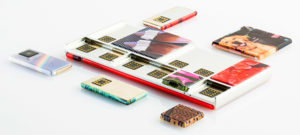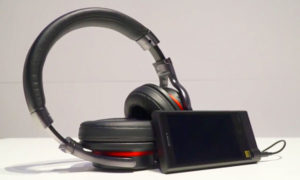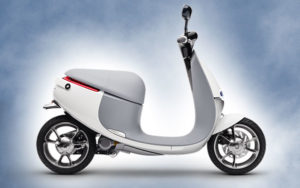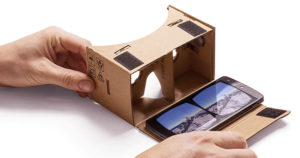
With the upcoming release of Apple’s iPhone, smartphones are becoming one of the most hyped categories of consumer technology today. The combination of telephone technology with e-mail, Internet access and multimedia — among other features — serves many consumer needs in one tidy, sleek little packet.
“Top-end devices today are like mini-laptops in many ways,” noted Neil Strother, research director for mobile devices, content and services at NPD Group. “The horsepower doesn’t match laptops, but they get close. The question is, what do people want to do with them, and what do they want to pay?”
Predictions abound about the future of smartphones — not just innovations that may occur but also who will be using them and whether, indeed, there will be any market left for “dumb” phones. The consensus? An array of irresistible new features will drive smartphones into the hands of new types of users, causing fragmentation of the market, but traditional phones may not be ready to go the way of the dinosaurs — at least not yet.
Europeans Ahead
Generally defined as mobile phones built around a mobile operating system, smartphones have already found widespread acceptance in Europe. By the third quarter of 2006, market penetration in Europe was 8.8 percent among recent device buyers, compared with only 3.8 percent in the United States, according to a report by Telephia.
Symbian, the creator of Europe’s market-leading smartphone operating system, reported in November that 100 million Symbian-powered smartphones had been shipped to date worldwide.
“High-speed networks like 3G were available earlier in Europe than in the U.S.,” said Reza Chady, Telephia’s managing director for Europe. “To get the best out of these faster networks, mobile consumers were motivated to purchase more advanced devices like smartphones, which provided a better experience with data applications.”
U.S. Growth
North Americans appear to be catching up, however. In the United States, 8.5 million devices were shipped in 2006, up from 5.2 million in 2005, according to Gartner Group’s 2006 report on Worldwide Converged Mobile Devices. Gartner predicts that shipments will leap to 54.3 million devices in the U.S. in 2010.
Among the most common vendors of the devices today are Windows Mobile, Research In Motion and Palm, in addition to Symbian.
As more U.S. networks get upgraded, the market is becoming primed and will see a rapid growth in smartphone usage, Jerry Panagrossi, vice president of U.S. operations for London-based Symbian, told TechNewsWorld.
An array of new features may tempt many new types of users to adopt smartphones. Mobile TV, for instance, is one Panagrossi predicted will be widely popular in the United States, allowing users to watch TV on their smartphones wherever they are.
Fast Forward
Panagrossi also cited many other features that are on the way, several of them already available in other countries:
- Mobile payment, in which a smartphone can be used to pay for goods. Already available in Japan, some devices include a fingerprint sensor for security, so that users must pass their finger over the sensor to confirm their identity before using the phone for payment. Others use face recognition, requiring that a user must take a photo of themselves with the phone to verify their identity, Panagrossi said.
- Location-based services (LBS), using global positioning systems for route planning and navigation. Like similar services in cars, LBS will be even more prevalent on smartphones, Panagrossi predicted, and will be of interest to advertisers, since people usually have their phones with them all the time. This technology is already available in Japan, and its time may be coming in the United States too. “Location-based services are always criticized as being ‘next year’s technology,'” Panagrossi said. “Now we’re starting to see the positioning infrastructure put in place.”
- Social networking, in which “the equivalent of MySpace is moved to the phone,” Panagrossi stated. Some phones already allow video sharing, and Panagrossi expects more such social-networking features to be rolled out in the next two years.
- Dual-mode devices, which can make calls through the user’s own IP network. The result will be that users can switch from calling over their IP at home to Wifi or cellular on the road, said Ramon Llamas, research analyst with IDC’s Worldwide Mobile Phone Tracker program.
Features vs. Cost
Whichever features customers ultimately choose, there are going to be trade-offs they’ll have to make, both with other features and with cost. “It used to be that folks didn’t want a lot of stuff on their phones,” Llamas told TechNewsWorld. “Now the pendulum is swinging the other way and people want as many features as possible. We’re pushing the boundaries as to how much a phone can do.”
So, if a user wants to be able to do social networking on their smartphone, for example, they may have to give up other features — or pay a higher cost.
While costs traditionally go down as a product category matures, they may become more important as new market segments begin to consider purchasing the devices. That shift, in turn, may ensure a continued market for traditional, “dumb” phones.
“Price will be a factor — the technology isn’t free,” noted NPD’s Strother. “The first wave of users is usually tech-savvy. The next wave will include low-income consumers, and they can get Internet access and the basics without an operating system. More and more phones will be smart, but I’m not sure when it will exceed 50 percent.”
Different Strokes
So, as new groups of users begin to turn to smartphones for different reasons — music lovers may go for the iPhone, for example, while “soccer moms” and business executives may choose different ones — the market will be increasingly fragmented, with different devices serving different groups of users.
Will smartphones soon become the only kind of phone available? “No,” Llamas proclaimed. “There will still be people who just use the phone for phone calls. Not everyone will want data.”
Llamas said he remains bullish on the devices, and smartphone vendors, not surprisingly, take that enthusiasm even further. “Within 5 years, 50 percent of all phones developed for developed countries will be smartphones,” Panagrossi predicted. “When we get there, the ‘smartphone’ label will likely disappear. Over time, smartphones will become the standard.”




















































